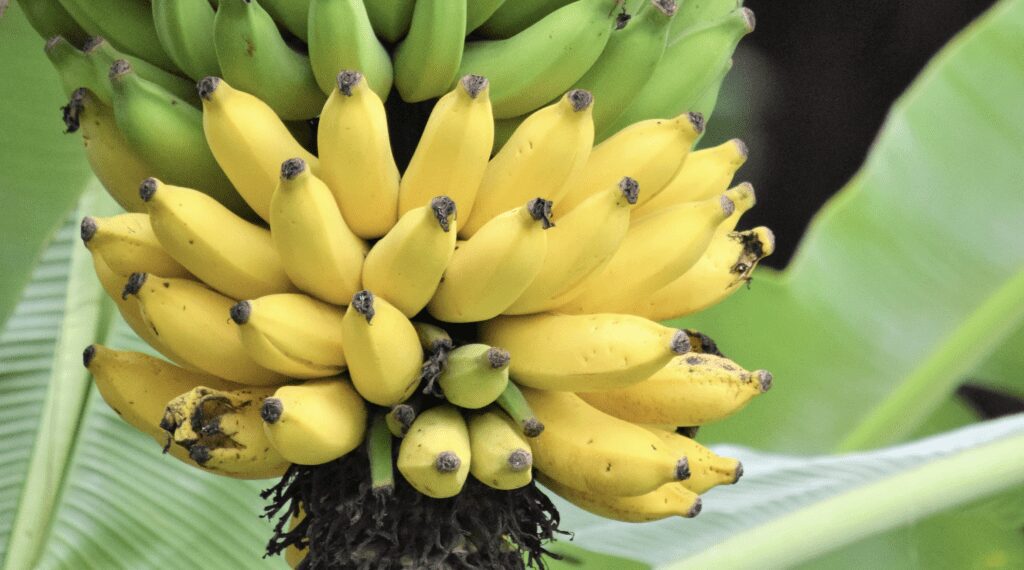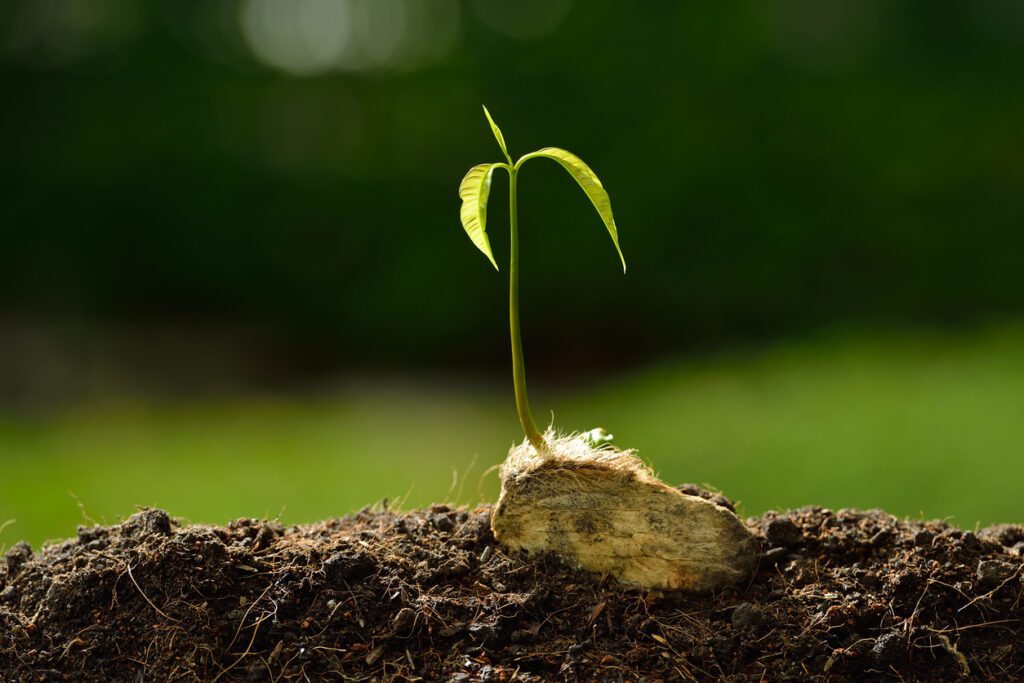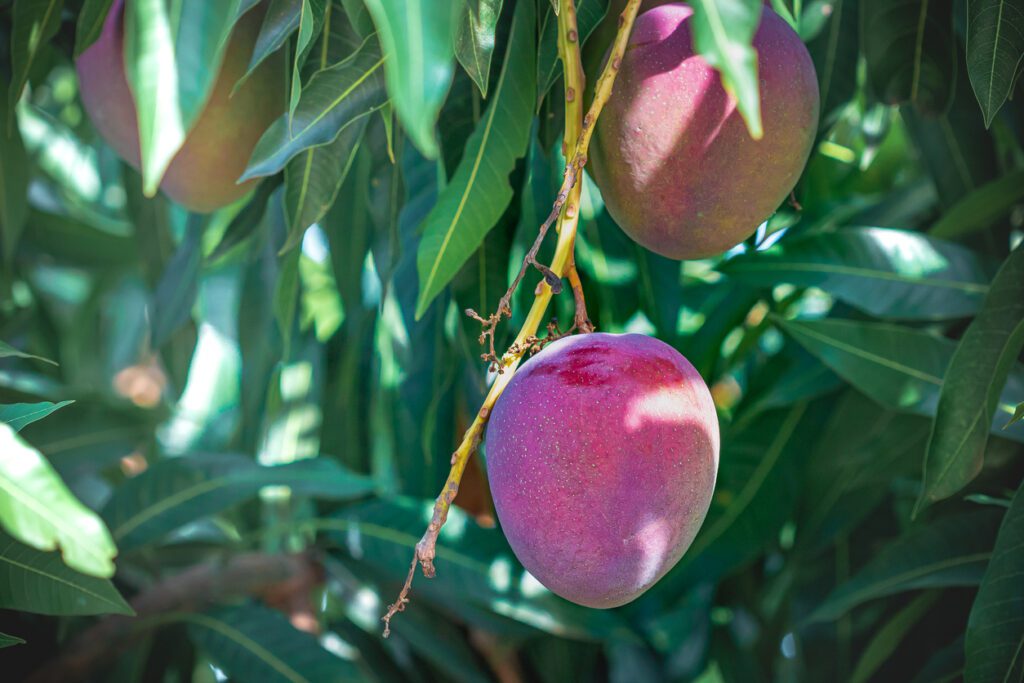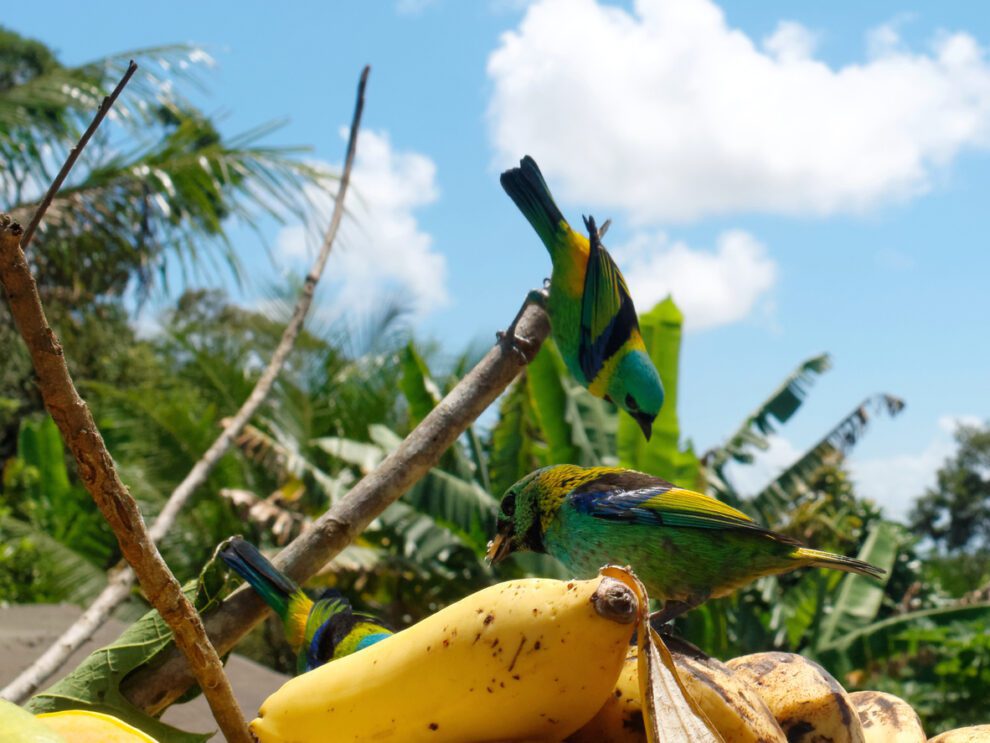Have you ever asked yourself why plants invest energy in fruits and offer them to animals – including us humans? The question might seem simple, but in reality, it is crucial for human health and has far-reaching consequences in understanding the natural human diet.
For quick readers:
Why do plants provide fruits for animals?
Fruits are the payment of plants for animal seed dispersal: Plants attract fruit-eating animals and reward them with energy and nutrients for transporting their seeds to grow in distant places. They attract fruit-eating animals with appealing colors, smell, sweetness, and taste. This symbiotic fruit-frugivore relationship drives evolution: The “dispersal syndrome” explains that frugivores (fruit-eating animals) shape fruit characteristics over time.
This dynamic has also consequences for human nutrition today.
Seed dispersal – animals are the natural “gardeners” paid off with nutrition
Fruits are the plant parts that develop from flowers. Fruits are the plant’s seed-bearing (or embryo-containing) structure. A fruit’s function is to attract seed-dispersing animals – frugivores – with its tasty nutrition. Humans are frugivores, too.

Essentially, plants employ frugivores to disperse their seeds, paying them with the sweet flesh of their fruit. Much like natural gardeners that are paid with nutrition.

From the plant’s perspective, rewarding animals with a sweet and delicious treat isn’t the end goal! Plants have something else in mind beneath the sweet fleshy layers of fruit:
It’s their seed! The seed is their future offspring that lie dormant in the fruit. While animals have many ways to ensure the prosperity of their young, all plants can really do is increase the chances that their offspring reach a good place to grow.

That’s where we (humans), and other frugivores, come into play. We eat the fruit and along with them, some of the seeds. These pass through our digestive system, protected by their tuff seed coats, and are eventually deposited as we go about our “business”, sometimes kilometers from the parent tree. Some seeds are huge and are “only” carried around by hand.
While a vast majority of these seeds might not find a good home, some end up in locations far superior to what they would have without an animal disperser.
Plants with the most delicious tastes, vibrant colors, and essential nutritional qualities were most likely to be sought after and thus have their seeds dispersed (see below).
Fruits are uniquely healthy because they are a “symbiotic food”
Fruits and frugivore symbiosis is the reason why fruits “want” to be eaten and why they are the healthiest type of food for the consumer: Eating fruit is a symbiosis between plants and animals. Why is this relevant in terms of human health? Because the plant benefits from its fruits being eaten! When the fruit ripens, its seed matures and gets ready to be distributed for germination in new places. Consequently, fruits do not contain toxic defense chemicals providing us with “clean” energy and nutrients. Other plant parts are not intended to be eaten and therefore contain defense compounds by the plant!
The defense molecules of plants are also known under the umbrella term anti-nutrients. Ripe fruits do not contain anti-nutrients – unlike most other plant foods! Fruits are, therefore, a special type of food: fruits provide high nutrition and basically zero toxicity for their specific frugivore! But not all frugivores evolve with all fruits – which is why not all fruits are equally suitable or healthy for humans.
As a food source, fruits are unique because of the symbiotic relationship between the plant and the frugivore: The plant attracts the animal with its color and smell in order to be consumed and have its seed dispersed. The animal gains the reward of energy- and nutrient-rich fruit pulp for helping disperse the plant’s seeds and offspring.
Dispersal syndrome: Frugivores drive fruit evolution!
Frugivores have played a role in the evolution of fruit, shaping color, taste, smell, nutrition and other traits: Over time, fruits have conformed to suit the preferences of frugivores who exerted evolutionary pressures on countless plant species to produce the most delicious and nutritious fruits. In evolutionary biology, this is known as the “dispersal syndrome.” As an outcome, this process determines today, which fruits are edible for a frugivore.
The frugivore’s choice influences the fruit genetics that is dispersed:
frugivore-driven selection
Plants with the most delicious tastes, vibrant colors, and essential nutritional qualities were most likely to be sought after and thus have their seeds dispersed.

Fruits are a “food match” with their disperser – also humans!
Fruits and its consumer depend on each other, which is why plants offer nutritious fruits to frugivorous animals. In exchange, animals transport the seeds in the fruits. A dynamic that enhances nutrition, smell, and taste, while decreasing toxic plant defense compounds over time and makes fruits a uniquely healthy food source.
The evolutionary relationship has surprising consequences for humans and their diet and health: As an originally tropical species, with a frugivorous ancestry, our most important evolutionary food source is tropical fruits! Humans have evolved in the tropics, and thus tropical fruits are key for optimal health!
In contrast to fruits that originate in colder, temperate climates, most wild tropical fruits are edible. Temperate fruits had to be hybridized and selectively bred to suit our needs and turn them edible! Some of the most popular vegetable fruits we eat today were even toxic in their wild form.
References
- E. Mendelson et al. (2020) What is a fruit? Frontiers for Young Minds. Available at: https://kids.frontiersin.org/articles/10.3389/frym.2020.00027 (Accessed: 11 June 2023).
- K. Valenta, O. Nevo, The dispersal syndrome hypothesis: How animals shaped fruit traits, and how they did not. Functional Ecology. 34, 1158–1169 (2020), doi:10.1111/1365-2435.13564.
- Andresen, E., Arroyo-Rodríguez, V. and Ramos-Robles, M. (2018) “Primate seed dispersal: Old and new challenges,” International Journal of Primatology, 39(3), pp. 443–465. Available at: https://doi.org/10.1007/s10764-018-0024-z.


Add Comment